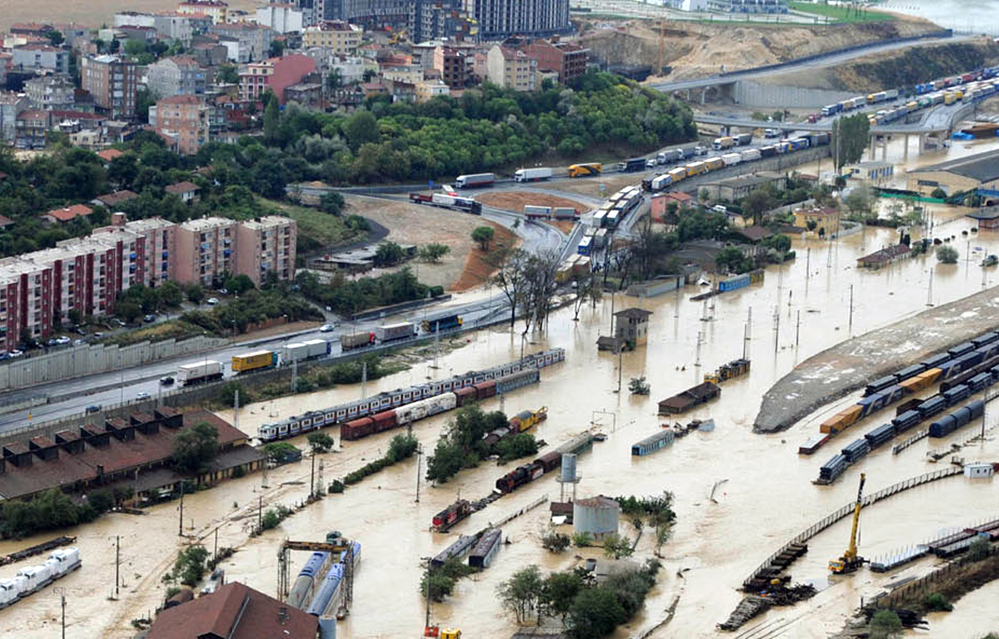IPA DRAM PROGRAMME
Worldwide, the number of disasters has increased in frequency the last 20 years. Disasters cause loss of lives, destroy valuable investment and threat a sustainable development. Climate change will result in even more intense disasters in the future. Albania, Bosnia and Herzegovina, the Republic of North Macedonia, Montenegro, Serbia, Kosovo* and Turkey are disaster prone countries and face multiple natural hazards such as floods, earthquakes, landslides, wildfires, heat waves and drought. Enhanced disaster risk management capacities to prevent risks and increase resilience would save lives, secure investment and ensure sustainable development. The needs to further strengthen capacities in the field of civil protection and general risk management in this region, and coordination both within the region and with sister agencies in EU-countries, was recognised by EU Member States and the European Commission through dedicated projects within the Instrument for Pre-accession (IPA). In this framework, the Programme for Disaster Risk Assessment and Mapping (IPA DRAM) further contributes to enhance the capabilities of the partner countries to strengthen disaster risk management by creating an open platform for the development and improvement of national disaster loss databases, enhancing the coherence among the national systems and methodologies, and consistency with existing EU regulations, guidelines and good practices.

An aerial view shows a flood-damaged railway station on September 9, 2009 in Istanbul. AFP PHOTO / STR (Photo credit should read STR/AFP/Getty Images)
IPA DRAM FACT-SHEET
| Contracting authority | European Commission – Directorate-General for European Civil Protection and Humanitarian Aid Operations (ECHO) |
| Consortium |
|
| Partners | Albania, Bosnia and Herzegovina, the former Yugoslav Republic of Macedonia, Kosovo, Montenegro, Serbia and Turkey – Civil protection agencies and disaster risk management institutions with responsibilities for disaster loss data, risk assessment and mapping as national coordinators |
| Technical components | 1) Disaster loss data (DLD)
2) Risk assessment (RA) 3) Risk mapping and Electronic Regional Risk Atlas (ERRA) |
| Purpose | To improve effective, coherent and EU oriented national systems for disaster loss data collection, risk assessment and mapping, and alignment and integration into the Union Civil Protection Mechanism |
| Overall objective | To increase beneficiaries’ capabilities to ensure proper disaster risk management at national, regional and EU levels |
| Results | Result 1: Further developed and improved national systems for disaster loss data collection based on the EU guidelines and good practices; linkages to European or global disaster loss databases
Result 2: Further developed and improved national risk assessments following EU guidelines and good Result 3: Further developed and improved national and regional risk mapping, and establishment of the Electronic Regional Risk Atlas (ERRA). |
| Budget | 2.999.250 EUR |
| Timeframe | 1 December 2016 – 30 November 2019 (36 months) |
Implementation approach
The Sendai Framework for Action and the disaster risk-informed approach for all EU policies (European Commission Staff working document) aiming to guide the multi hazard management of disaster risk in development at all levels as well as within and across all sectors, will serve as a guiding theoretical framework for the implementation of the programme;
Continuity on existing national and regional structures and initiatives taking into account national/ regional strategies when designing the country-specific plans of action, including the national disaster risk reduction platforms and former projects funded by the EU Instrument for Pre-Accession (i.e. IPA CP I and II, IPA FLOODS)
The perspectives of environment, gender and civil society involvement will be taken into consideration throughout the full programme cycle in order to achieve effective and sustainable results.
Local ownership and participation is a key principle for successful and sustainable results and will be ensured through the active involvement of partner agencies and experts from the outset of the project, starting with comprehensive dialogue in the inception phase and participatory fact-finding missions.
Having a multi-stakeholder and inter-agency approach to the planning, design and implementation of activities will ensure a holistic understanding of needs, capacities and assets allowing for a comprehensive approach to developing disaster risk management capacities in the partners. both horizontally between sectors and institutions (including private sector and civil society) and vertically between local, national, regional and global levels.
While ensuring a regional approach, the programme also recognises that each Partner is unique and the support to the partner countries will be adapted to the level of each and every country based on the progress made.




